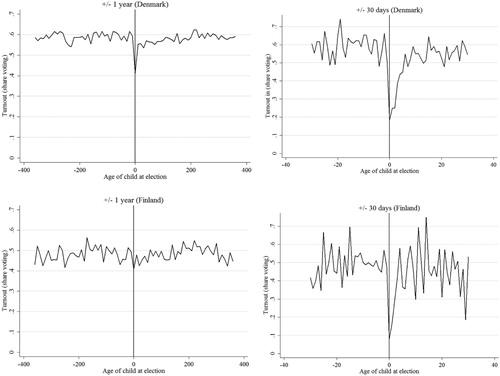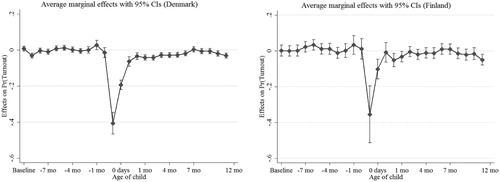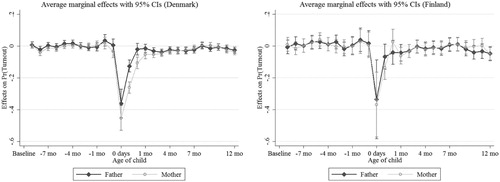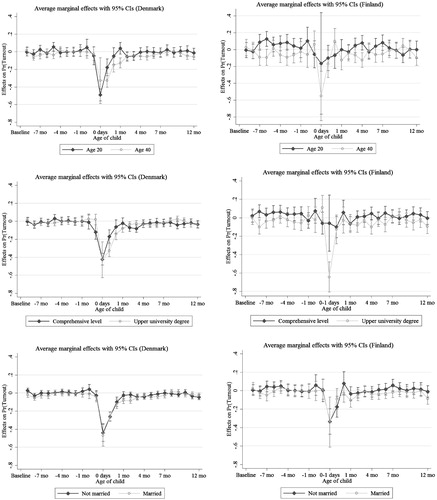Figures & data
Figure 1. Turnout as a function of age of a child at the time of the elections in Denmark and Finland.
Note: In the left-hand panels, one data point equals a 10-day increment. In the right-hand panels, one data point equals one day in order to better distinguish individual days close to the elections.

Figure 2. Turnout as a function of the age of the child on Election Day (average marginal effects from logistic regressions).
Note: See Table A2 (logit coefficients) and A3 (average marginal effects) of the online appendix for full models. The models control for gender, marital status, education, country of origin, citizenship, birth order, other children born close to elections, age dummies and geographical dummies. Summary statistics can be found in Table A1 of the online appendix.

Figure 3. Turnout as a function of the age of the child on Election Day interacted with gender (average marginal effects from logistic regressions).
Note: Average marginal effects with 95% confidence intervals shown. The base category for age is –365 days to –271 days. The models control for gender, marital status, education, country of origin, citizenship, birth order, other children born close to elections, age dummies and geographical dummies.

Figure 4. Turnout as a function of the age of the child on Election Day interacted with age, education and marital status, respectively (average marginal effects from logistic regressions).
Note: Average marginal effects with 95% confidence intervals. The base category for age is –365 days to –271 days. Note that the category of “0” equals 0 to 1 day for education and marriage in Finland due to too few observations. Control variables for both countries include gender, education (in the education models a continuous version of education is used), country of origin, citizenship, civil status (a dummy variable is used in the marriage models), birth order (firstborn vs. others), other children born close to elections, age dummies (in the age models a continuous version of age is used) and geographical dummies.

